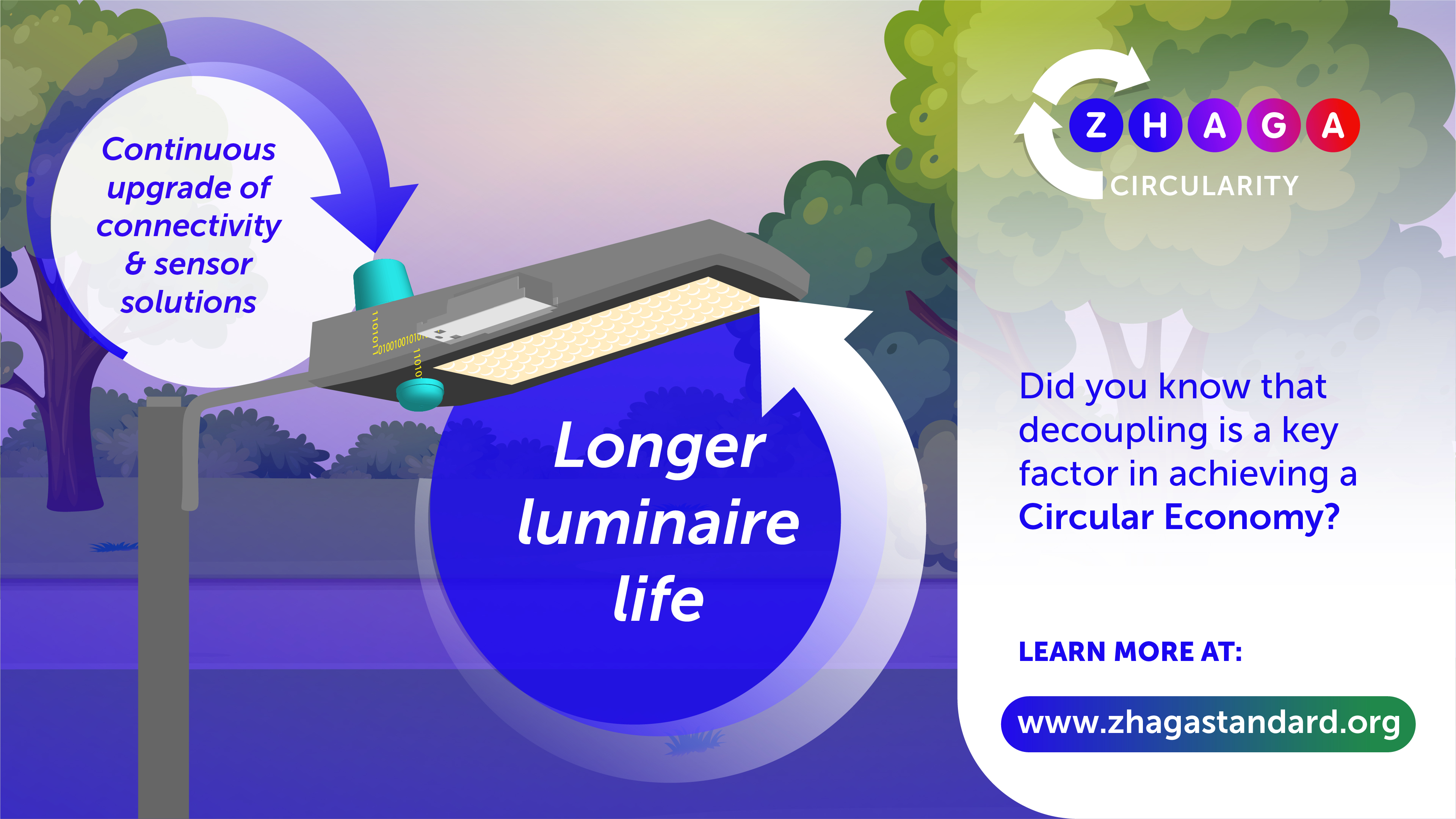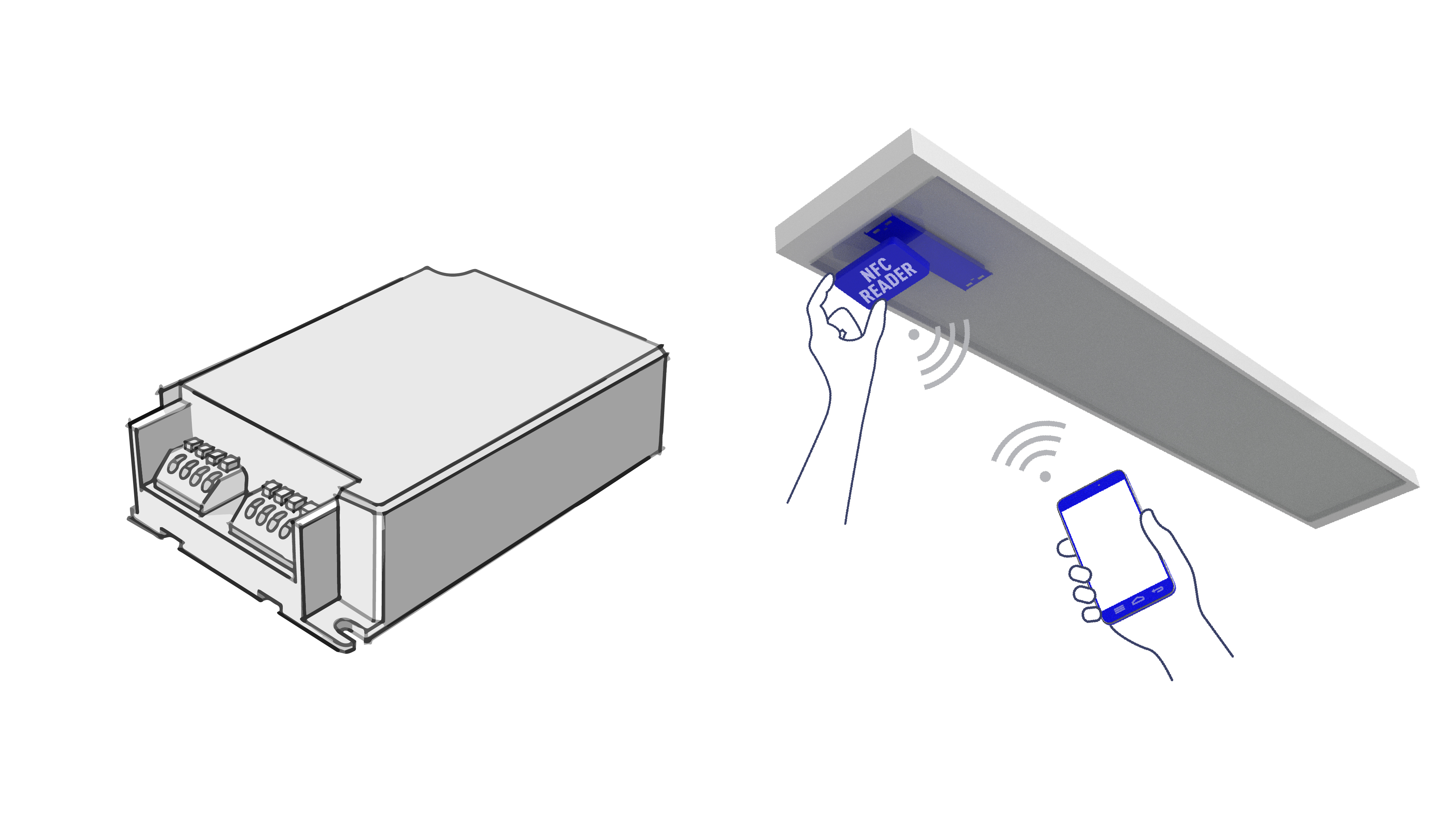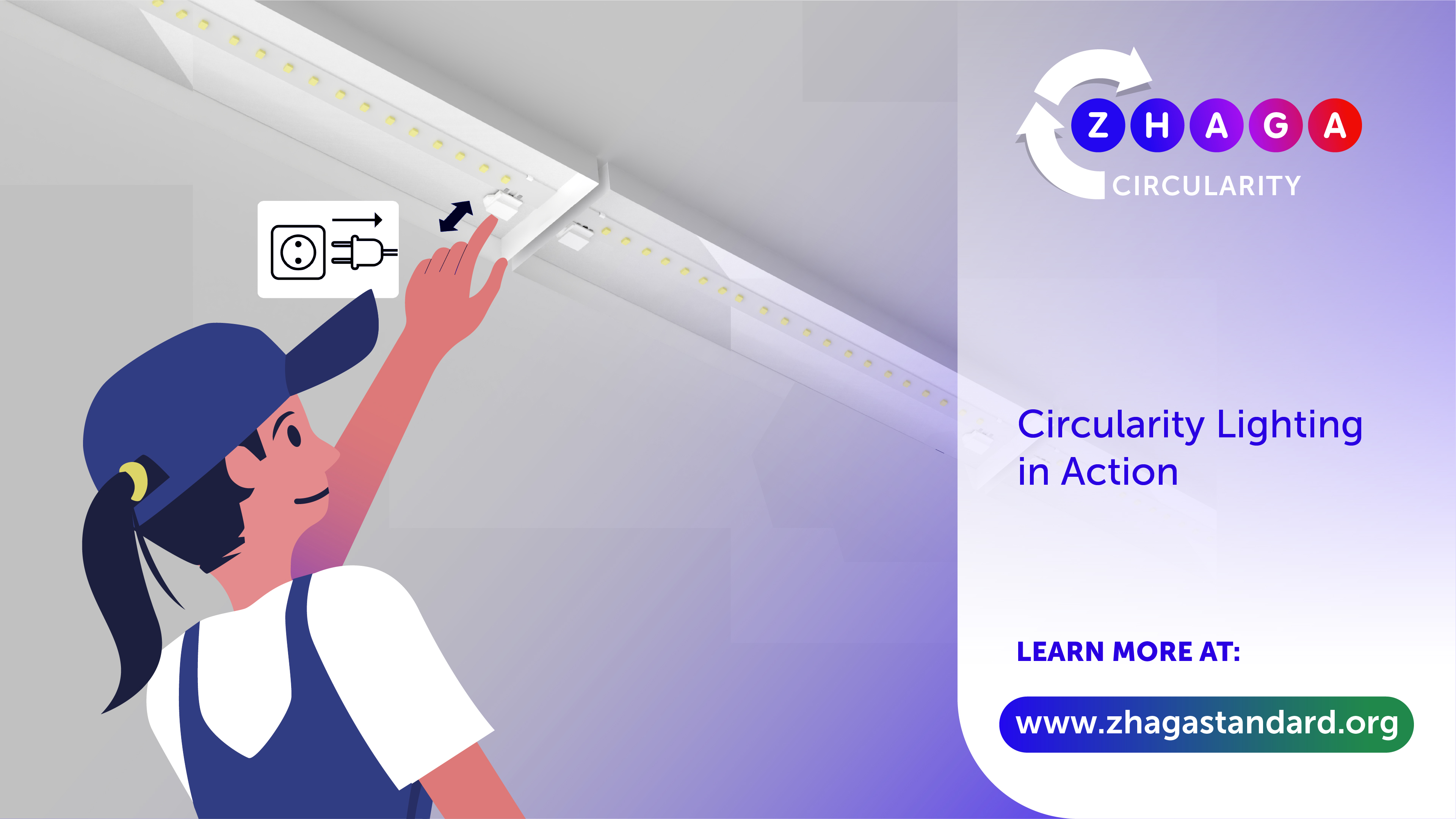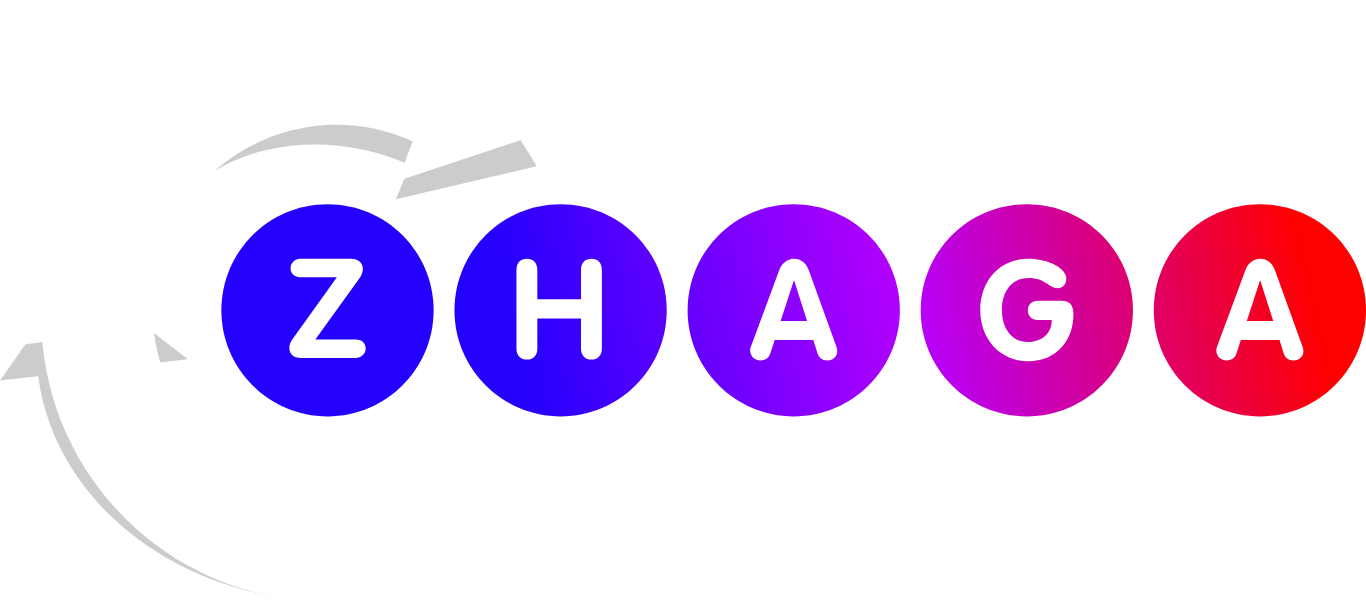
How Zhaga addresses Sustainability and the Circular Economy
Durable, repairable and upgradeable LED luminaires are key elements contributing to sustainable lighting. Zhaga is developing and standardizing interface specifications for components of serviceable luminaires, to help facilitate a new market framework called “Circularity Lighting”.
What is Circularity Lighting?
The Zhaga consortium focuses on the development and standardisation of interface specifications for interoperable components for serviceable LED luminaires.
Zhaga uses the term ‘Circularity Lighting’ to depict a market framework of standards and regulations for products and systems that support the aims of the circular economy through enhanced serviceability.
Sustainable lighting is a more general term and includes the properties of Circularity Lighting next to supporting energy efficiency.
Sustainable action and Circularity lighting
Sustainable action in the lighting industry means, above all, the provision and continuous development of energy-efficient lighting products and solutions, the resource-saving design of durable and serviceable products, the collection and recycling of materials and the reduction or avoidance of harmful substances. Serviceable products and systems are characterized by the following properties, among others:
- Repairability of luminaires – for the occasional failure of a component.
- Upgradeability of luminaires – for when a larger energy saving can be made with newer components, or new sensor or connectivity technologies can be integrated and used.
- Replaceability of components – if for instance an LED module with different colour temperature is required, but also to support repair and upgrade of luminaires.
- Serviceability – is often used as a summary term for the above-mentioned properties, but also includes other characteristics such as the ability to adjust the illuminance level or programme different control settings when requirements change.
- Being future proof - so that new sensor or connectivity technologies can be integrated and used.
- Durability - this is not only a quality characteristic of a luminaire, but also concerns the ability to extend its useful life through servicing.
These properties and benefits can be realized and ensured, leading to durable and future proof lighting solutions, if the products and systems are designed in a modular way and the interfaces of the components used are based on standardized and widely recognised specifications. Ideally, there is an ecosystem of components that are interoperable with each other across manufacturers.
In the lighting industry, we use the term ‘Circularity Lighting’ for a market framework with products and systems that support the aims of the circular economy through enhanced serviceability. Sustainable lighting is a more general term and includes the properties of Circularity Lighting next to supporting energy efficiency.
The Zhaga Consortium clearly states in its vision and mission that standardization of interoperable components for serviceable LED luminaires will allow the development of more resource-efficient business models that meet the requirements of circularity, including concrete legislation, enabling market growth.
Problems to be addressed and solutions provided
1. Different life cycle of luminaires and connectivity solutions
Zhaga solution:
Specifications for intelligent interfaces between outdoor resp. indoor luminaires and sensor /communication modules (Zhaga Book 18 and Book 20)

Luminaires for professional applications in office, education, industry, street lighting etc. are often designed with long product lifetimes up to 70,000 or even 100,000 hours. However, connectivity solutions for such luminaires are subject to rapid technological change. Communication protocols, sensor technologies and functions beyond lighting can change during the lifetime of a luminaire and completely new solutions can emerge. It therefore makes sense to decouple the connectivity related parts of a long-life luminaire from the rest of the luminaire, via defined interfaces enabling supplementation, upgrading or replacement of components, at any time after installation of the luminaire. The Zhaga Consortium has developed and published specifications for intelligent interfaces between indoor and outdoor luminaires and sensor/communication modules, which are documented in the so-called Books 18 and 20. Sensor/communication modules and luminaires designed and certified according to these specifications are guaranteed to work together as intended, even if they come from different manufacturers. This ecosystem of durable luminaires and the multitude of intelligent sensors and communication modules, based on standardized interfaces, makes lighting systems future-proof and is an efficient contribution to the realization of the circular economy.
2. Interoperability of LED control gear (“Drivers”)
Zhaga solution:
Zhaga Book 25 builds on Book 24, NFC programming of drivers made easy, but now includes mobile NFC Readers with a Bluetooth interface. It enables maintenance and replaceability with a cross vendor harmonized method of NFC programming for in-field use.

The Zhaga consortium also deals with interoperability aspects of LED control gear. A prominent example is the analogue LEDset interface, with which the output current of a control gear can be set in a simple and standardized way and thus individually adapted to the requirements of a lighting application. The somewhat more modern form of current setting via uniform NFC programmers was also specified by Zhaga, is widely used in the industry and allows for an update of the settings of the LED control gear in the field.
To ensure that the replacement of control gear can also be carried out easily and in accordance with regulatory requirements in terms of electromagnetic compatibility, Zhaga is working on corresponding requirements and guidelines for control gear and luminaires, which are also coordinated with the relevant international SDOs (Standardization Development Organizations).
3. Even luminaires of high quality and durable design can sometimes experience an early failure
Zhaga solution:
The Zhaga Book 21 and Book 26 describe standardized interfaces of linear LED modules which can be replaced by professionals in on-site installations. The corresponding logos on certified luminaires and LED modules indicate that the components are interoperable and work together as intended.

Even luminaires of high quality and durable design can sometimes experience an early failure. Electronic components are subject to a statistical failure risk. Spontaneous defects of control gear, LED modules and lighting control devices cannot be completely excluded and there comes a point in time where failures occur. Furthermore, environmental influences (e.g. high surges on the mains input or other extreme operating conditions) can lead to the failure of luminaire components. The effects of individual luminaire failures are particularly serious when, after years of operation, there are no replacement luminaires, nor spare parts available anymore, necessitating the replacement of a whole group of luminaires.
The Zhaga Books 21 and 26 describe standardized interfaces of linear LED modules which can be replaced by professionals in on-site installations. The corresponding logos on certified luminaires and LED modules indicate that the components are interoperable and work together as intended.
Zhaga Summit “Sustainable Lighting for Smart Cities and Buildings”
The Zhaga Consortium hosted this online event on 29 September with speakers from national authorities, cities, industry association, lighting design and manufacturing.
The target audience were manufacturers of lighting products and specifiers, users and investors of smart city and building lighting installations.
In the online sessions we wanted
- to shed light on the regulatory framework around circularity and new visions in lighting design,
- to discuss pioneering use cases from cities, national authorities and manufacturers, and
- to explain the role of Zhaga in support of the trend towards sustainable lighting.
Presentations / recorded video from program

